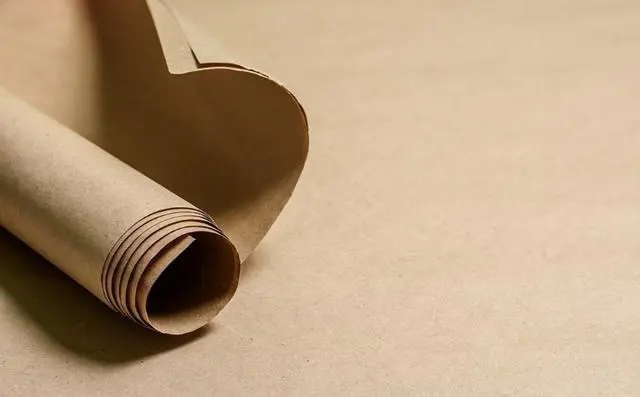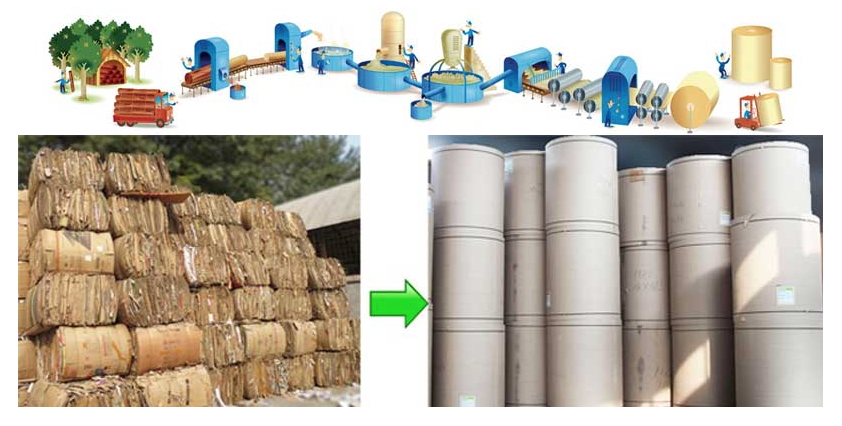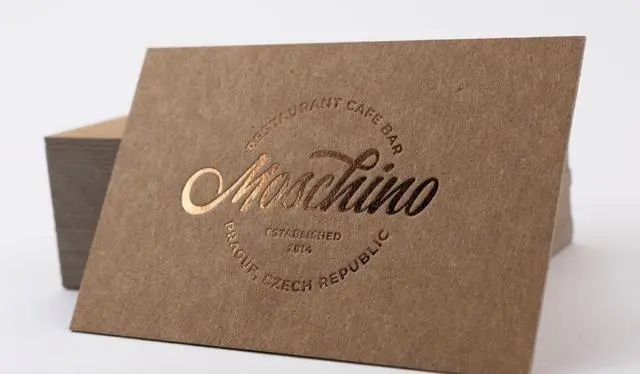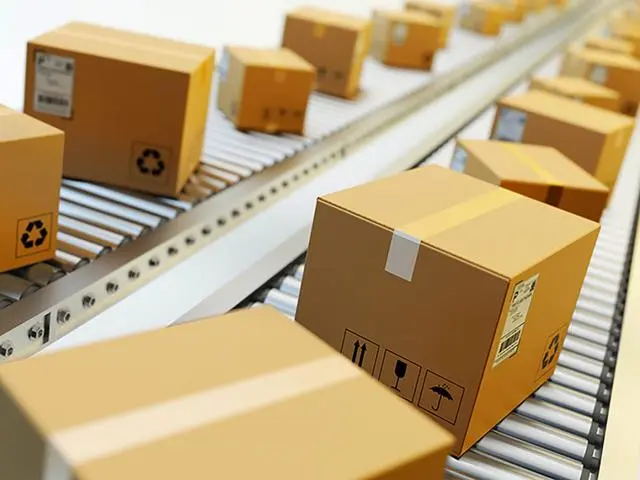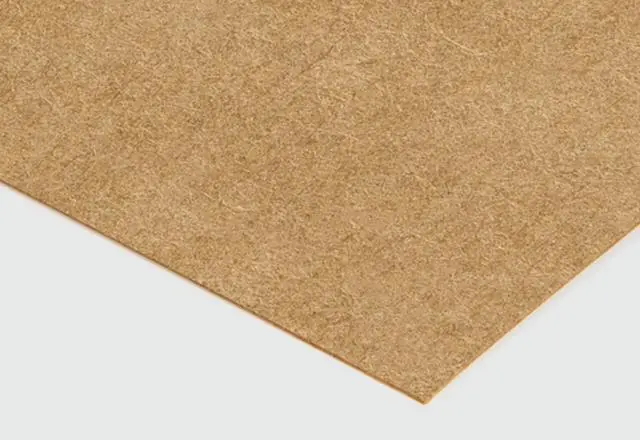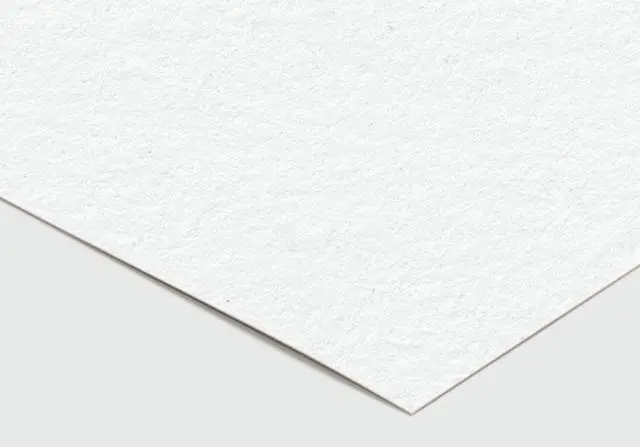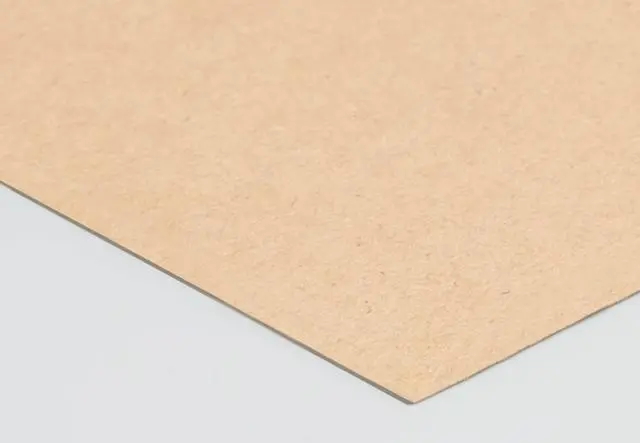Kraft paper has become the preferred choice due to its high strength, versatility, and low environmental impact. It is 100% recyclable and environmentally friendly, with a long history of production that involves wood fibers, water, chemicals, and heat. Kraft paper is stronger and more porous, making it suitable for special processes. It is widely used in packaging, such as cartons and paper bags, and there are various types classified according to their nature and purpose.
1.What is kraft paper?
Kraft paper refers to paper or paperboard produced from chemical pulp using the kraft papermaking process. Due to the kraft pulping process, kraft paper possesses excellent durability, water resistance, and tear resistance, and its color is typically a yellowish-brown hue.
Kraft pulp has a deeper color than other wood pulps, but it can be bleached to create a very white pulp. Fully bleached kraft pulp is used in the production of high-quality paper where strength, whiteness, and resistance to yellowing are crucial.
2. History and Production Process of Kraft Paper
Kraft paper, a commonly used packaging material, is named for its pulping process. The kraft papermaking process was invented by Carl F. Dahl in Danzig, Prussia (now Gdańsk, Poland) in 1879. The name kraft is derived from the German word "Kraft," which means strength or vitality.
The basic elements for manufacturing kraft pulp are wood fibers, water, chemicals, and heat. Kraft pulp is produced by mixing wood fibers with a solution of caustic soda and sodium sulfide and cooking them in a digester.
After undergoing various manufacturing processes such as impregnation, cooking, pulp bleaching, beating, sizing, whitening, purification, screening, forming, dehydration and pressing, drying, calendering, and winding, along with strict process control, the kraft pulp is finally transformed into kraft paper.
3. Kraft Paper vs. Regular Paper
Some may argue that it's just paper, so what's so special about kraft paper?
In simple terms, kraft paper is stronger.
Due to the kraft pulping process mentioned earlier, more lignin is removed from the kraft pulp wood fibers, leaving behind more fibers. This gives the paper its tear resistance and durability.
Unbleached kraft paper is often more porous than regular paper, which may result in slightly poorer printing results. However, this porosity makes it extremely suitable for certain special processes, such as embossing or hot stamping.
4.Applications of Kraft Paper in Packaging
Today, kraft paper is primarily used for corrugated boxes and in the production of paper bags without plastic hazards, such as those used for cement, food, chemicals, consumer goods, and flour.
Due to its durability and practicality, corrugated boxes made of kraft paper are highly popular in the express delivery and logistics industry. These boxes effectively protect products and can withstand harsh transportation conditions. Additionally, the cost-effectiveness of kraft paper makes it a suitable choice for business development.
Kraft paper boxes are also often used by companies to achieve sustainable development goals, clearly depicting environmental protection efforts through the rustic and raw appearance of brown kraft paper. Kraft paper has a wide range of applications and can provide various innovative packaging solutions in today's packaging industry.
5. Types of Kraft Paper
Kraft paper often retains its original yellowish-brown color, making it suitable for the production of bags and wrapping paper. There are various types of kraft paper based on its properties and applications. Kraft paper is a general term for paper and does not have specific standards. It is generally classified according to its properties and intended uses.
By color, kraft paper can be categorized into natural kraft paper, red kraft paper, white kraft paper, matte kraft paper, single-sided gloss kraft paper, dual-colored kraft paper, and others.
Based on its applications, kraft paper can be divided into packaging kraft paper, waterproof kraft paper, beveled kraft paper, rust-proof kraft paper, patterned kraft paper, insulating kraft paperboard, kraft stickers, and more.
According to its material composition, kraft paper can be further classified into recycled kraft paper, kraft core paper, kraft base paper, kraft wax paper, wood pulp kraft paper, composite kraft paper, and others.
Common Types of Kraft Paper
1. Coated Unbleached Kraft Paper (CUK)
This material is considered the most basic version of kraft paper. It does not undergo any "bleaching" or further chemical additives, aside from the chemicals used in the kraft pulping process. As a result, it is also known as solid unbleached kraft or sulfite, consisting of 80% virgin fiber wood pulp/cellulose kraft pulp. It exhibits excellent tear resistance and high stiffness without being overly thick. In fact, it is the thinnest of all kraft paper packaging substrates.
2. Solid Bleached Kraft Paper (SBS)
While unbleached kraft paper is considered more environmentally friendly due to its natural color and lack of chemical treatments, it may not always be the ideal choice for certain applications, such as packaging for luxury or high-end products. In these cases, bleached kraft paper may be preferred because it has a smoother surface and a brighter appearance, which can enhance printing quality and provide a more premium look and feel.
3. Coated Recycled Board (CRB)
Coated recycled board is made of 100% recycled kraft paper. Because it is not produced from virgin fibers, its specifications and tolerances are less than those of solid bleached kraft paper. However, recycled kraft paper is also a low-cost packaging substrate, making it well-suited for applications that do not require high tear resistance or strength, such as cereal boxes. For corrugated boxes, more varieties can be achieved by adding kraft paper layers.
Post time: Apr-06-2024
